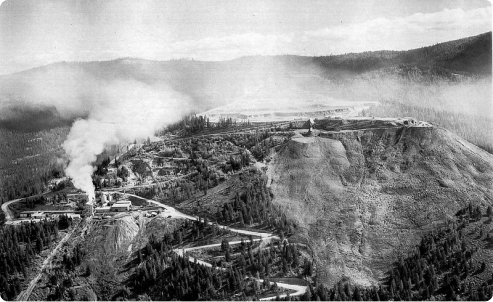National Asbestos Legislation
U.S. policymakers have tried to introduce laws to ban asbestos, but all have failed. A limited number of asbestos uses are banned under various acts, but many remain legal, including uses in automobile brake pads and clutches, gaskets and asbestos diaphragms.

Written by Joe Lahav, Esquire • Edited By Walter Pacheco • Legally Reviewed By William A. Davis
Asbestos.com is the nation’s most trusted mesothelioma resource
The Mesothelioma Center at Asbestos.com has provided patients and their loved ones the most updated and reliable information on mesothelioma and asbestos exposure since 2006.
Our team of Patient Advocates includes a medical doctor, a registered nurse, health services administrators, veterans, VA-accredited Claims Agents, an oncology patient navigator and hospice care expert. Their combined expertise means we help any mesothelioma patient or loved one through every step of their cancer journey.
More than 30 contributors, including mesothelioma doctors, survivors, health care professionals and other experts, have peer-reviewed our website and written unique research-driven articles to ensure you get the highest-quality medical and health information.
About The Mesothelioma Center at Asbestos.com
- Assisting mesothelioma patients and their loved ones since 2006.
- Helps more than 50% of mesothelioma patients diagnosed annually in the U.S.
- A+ rating from the Better Business Bureau.
- 5-star reviewed mesothelioma and support organization.
Testimonials
My family has only the highest compliment for the assistance and support that we received from The Mesothelioma Center. This is a staff of compassionate and knowledgeable individuals who respect what your family is experiencing and who go the extra mile to make an unfortunate diagnosis less stressful. Information and assistance were provided by The Mesothelioma Center at no cost to our family.LashawnMesothelioma patient’s daughter
How to Cite Asbestos.com’s Article
APA
Lahav, J. (2024, March 20). National Asbestos Legislation. Asbestos.com. Retrieved April 19, 2024, from https://www.asbestos.com/mesothelioma-lawyer/legislation/
MLA
Lahav, Joe. "National Asbestos Legislation." Asbestos.com, 20 Mar 2024, https://www.asbestos.com/mesothelioma-lawyer/legislation/.
Chicago
Lahav, Joe. "National Asbestos Legislation." Asbestos.com. Last modified March 20, 2024. https://www.asbestos.com/mesothelioma-lawyer/legislation/.
How Does Legislation Regulate Asbestos in the U.S.?
Both federal and state laws regulate asbestos in the U.S. Most industrialized countries have enacted a national ban on asbestos, but America has not enacted a full ban of asbestos, nor does it have a comprehensive federal law that regulates asbestos.
Instead, federal and state laws work together to regulate asbestos use, abatement and litigation. Federal laws apply nationwide and mostly affect how asbestos is used in products. Federal attempts to limit asbestos litigation have failed so far.
State asbestos laws tend to be similar regarding abatement, but asbestos litigation laws vary by state. For example, some states have enacted legislation limiting a claimant’s access to compensation for sickness, loss of life and loss of wages.
In March 2024, the Biden administration finalized a U.S. ban of chrysotile asbestos. The mineral continues to be imported into the U.S. particularly for use in the chloralkali industry. The ban allows companies a phase out period of up to 12 years, allowing them to continue manufacturing during that time. This new ban doesn’t apply to all types of asbestos.
Federal laws were passed to create compensation systems for other types of claimants. For example, the Black Lung Benefits Act created a federal program for U.S. coal miners. A similar federal program was proposed through the Fairness in Asbestos Injury Resolution Act of 2006, but the legislation failed.
Working with specialized mesothelioma lawyers provides the best chance for compensation for people harmed by asbestos.
History of Asbestos Use & Legislation
-
1930
By the 1930s, medical evidence had already linked asbestos exposure with deadly diseases. Asbestos manufacturers knew about the early evidence. Many of them did not warn workers or the public about the dangers and potential future health issues. Routine use of asbestos in construction and industrial products continued.
-
1960
Asbestos-related diseases do not surface until decades after exposure, so the health hazards did not receive widespread public attention until the 1960s and 1970s. Soon, the health risks of asbestos were hard to hide.
-
1970
During the 1970s, the U.S. government passed federal legislation to limit asbestos use and exposure. These guidelines were followed by more federal, state and local public safety laws in the 1980s.
-
1980
Through the late 1980s, much of the attention surrounding asbestos focused on abatement, which involves encapsulating or removing asbestos from existing buildings. There were also calls for laws to ban the use of the toxic mineral.
-
1990-Present
U.S. Sen. Patty Murray sponsored the Ban Asbestos in America Act of 2007, but it died in Congress. In 2009, she also sponsored a bill that led to recognition of Sept. 26 as National Mesothelioma Awareness Day. A 2016 action to put asbestos in the 10 top chemicals requiring priority action resulted in the U.S. Environmental Protection Agency’s final rule on asbestos in April 2019.
-
2024
The Biden administration finalizes a U.S. ban of chrysotile asbestos. The toxic mineral also known as white asbestos, continues to be imported to the U.S. mostly for use in the chloralkali industry. The ban allows companies to keep using the material during the manufacturing process for up to 12 years. The new ban doesn’t apply to all types of asbestos.
Connect with a Top Mesothelioma Attorney
Only a qualified attorney can determine if you are eligible and help you seek the mesothelioma compensation you deserve.


U.S. EPA 2019 Final Rule on Asbestos
On April 25, 2019, the EPA issued a final rule on the Restrictions on Discontinued Uses of Asbestos. It originated with a Significant New Use Rule on asbestos, which the agency announced in June 2018. According to the EPA, a Significant New Use Rule requires notice to the agency before chemical substances are used in new ways that might create concerns.
This final rule closes a loophole in asbestos regulations. It reportedly ensures that discontinued uses of asbestos cannot re-enter the market without an agency review for potential risks to health and the environment. The review may result in regulation or prohibition.
The agency provided the following list of discontinued asbestos products that would require a review under the new rule.
- Adhesives, sealants, and roof and nonroof coatings
- Arc chutes
- Beater-add gaskets
- Extruded sealant tape and other tape
- Filler for acetylene cylinders
- High-grade electrical paper
- Millboard
- Missile liner
- Pipeline wrap
- Reinforced plastics
- Roofing felt
- Separators in fuel cells and batteries
- Vinyl-asbestos floor tile
- Any other building material (other than cement)
Most of these potential uses are construction materials.
The EPA said the final rule does not provide a pathway for formerly banned asbestos products to become legal.
Alan Reinstein Ban Asbestos Now Act of 2019
Introduced in March 2019, the bill aimed to amend the Toxic Substances Control Act to fully ban asbestos in the U.S. The legislation would have prohibited the manufacturing, processing and distribution of asbestos and asbestos-containing products.
The bill advanced from a House subcommittee on Nov. 19, 2019, but it did not receive a vote thereafter and died in Congress. No other federal legislation to ban asbestos has been introduced since.
Furthering Asbestos Claims Transparency Act of 2017
One of the biggest threats to those unfairly injured by asbestos exposure was the Furthering Asbestos Claims Transparency Act, also known as the FACT Act. The bill died in Congress because it never received a vote.
It would have required asbestos trusts to publicly disclose information about the settlement terms between trusts and claimants. Current federal laws consider these negotiations private and confidential.
The act also would have put personal information of claimants, including the last digits of their social security number, in a public database.
As of 2021, a total of 16 states have enacted asbestos trust fund transparency laws similar to the FACT act.
Bruce Vento Ban Asbestos and Prevent Mesothelioma Act of 2008
Introduced in Congress in September 2008, the bill aimed to amend the Toxic Substances Control Act to ban more types of asbestos products.
The bill would have permitted a few uses of asbestos such as in the production of chlorine and lye. It would have revised the definition of asbestos to include winchite, richterite and other asbestiform amphibole minerals.
It also aimed to increase public awareness of the health effects of asbestos exposure. The bill never received a vote and died in Congress.
Ban Asbestos in America Act of 2007
Multiple versions of the Ban Asbestos in America Act were introduced in Congress during the past decade. The most recent version, introduced in 2007, never became law.
The bill would have authorized the EPA to issue more regulations banning the importing, manufacturing, processing or distribution of asbestos products. It also would have allocated money for research into asbestos-related diseases and require the agency to report to Congress on recommendations for protecting human health from asbestos exposure.
Fairness in Asbestos Injury Resolution Act of 2006
The Fairness in Asbestos Injury Resolution Act, also known as the FAIR Act, is Congress’ most comprehensive effort to address compensation for asbestos claimants. Federal lawmakers have introduced multiple versions of the bill in the U.S. House and the Senate during the past decade.
- Establish an office within the U.S. Department of Labor to handle asbestos injury claims
- Provide fair compensation to eligible claimants in a nonadversarial manner
- Determine compensation amounts based on the severity of the claimant’s disease
- Bring most pending claims in state and federal courts to a standstill
The FAIR Act never became law.
Bankruptcy Reform Act of 1994
The U.S. Bankruptcy Code was amended in 1994 to allow companies with significant asbestos liabilities to seek bankruptcy protection for future claims.
These amendments were sometimes called the “Manville Amendments.” The provisions provided an option for manufacturers such as the Johns Manville Corporation to file for bankruptcy. The company had been sued many times and faced more liabilities in the future.
The 1994 amendments were modeled after the Manville Trust. They established a way for the companies to settle future claims through the creation of special bankruptcy trusts.
Asbestos Hazard Emergency Response Act of 1986
This law ordered the EPA to monitor asbestos in schools. It established regulatory standards for inspections and proper abatement of asbestos in schools.
The agency requires all public and private school systems to inspect facilities for asbestos. It requires schools to develop plans for containing and removing asbestos. The agency also provides guidelines and technical assistance to help school districts.
Toxic Substances Control Act of 1976
The Toxic Substances Control Act (TSCA) gave the EPA the power to regulate new commercial chemicals. It also granted power to regulate existing materials such as asbestos that pose unreasonable health or environmental risks.
The agency attempted to use this authority in 1989 by banning most asbestos-containing products. This was known as the Asbestos Ban and Phase-Out Rule. It would have prohibited manufacturing, importing, processing and distributing most asbestos products.
However, a group of interested corporations successfully challenged the rule in court. A 1991 decision by the U.S. Court of Appeals for the Fifth Circuit eventually rejected much of the rule. Some products were banned under the agency’s rule, but most remained legal.
- Corrugated paper
- Rollboard
- Commercial paper
- Specialty paper
- Flooring felt
- New uses of asbestos after 1989
This was the EPA’s biggest and last attempt at a full ban on asbestos products. Prior to this action, the agency banned several different types of asbestos products under the Clean Air Act of 1970.
In December 2020, the agency issued a final risk evaluation on chrysotile asbestos. The evaluation found unreasonable risks to workers, consumers and bystanders for the ongoing use of asbestos in gaskets, oilfield brake blocks, asbestos diaphragms, aftermarket automotive brakes and linings and other vehicle friction products.
Without a comprehensive ban on all asbestos products, continued use of the following asbestos-containing products remains legal in the U.S.
- Asbestos diaphragms
- Automatic transmission components
- Brake blocks
- Clutch facings
- Disc brake pads
- Drum brake linings
- Gaskets (including sheet gaskets)
- Oilfield brake blocks
- Other vehicle friction products
The agency is currently evaluating the risks presented by legacy asbestos products that remain in older buildings and homes. It will also assess risks associated with the disposal of old asbestos-containing materials.
Medical Device Amendments of 1976
In 1976, the Medical Device Amendments to the Pure Food and Drugs Act of 1906 aimed to provide assurance about the safety and effectiveness of medical devices. It created regulatory pathways for new medical devices and established good manufacturing practices.
The amendments also authorized the U.S. Food and Drug Administration to ban devices. It allowed the administration to ban the use of asbestos-containing filters in pharmaceutical manufacturing, processing and packaging.
Consumer Product Safety Act of 1972
Enacted in 1972, the Consumer Product Safety Act aimed to protect consumers against unreasonable risk of injury from hazardous products.
It established the Consumer Product Safety Commission, which has the authority to develop standards, issue recalls and ban products.
In 1977, the commission used its authority to ban asbestos in artificial fireplace embers and wall patching compounds.
Clean Air Act of 1970
The Clean Air Act required the EPA to regulate emissions of hazardous air pollutants. The regulations are known as National Emission Standards for Hazardous Air Pollutants, or NESHAP.
Asbestos was first identified as a hazardous air pollutant under this law. Amendments to the act resulted in several U.S. Environmental Protection Agency regulations governing the use and disposal of asbestos.
It gave the agency the authority to ban certain asbestos products.
- 1990: The agency prohibited spray-on applications of materials containing more than 1% asbestos to buildings, structures, pipes and conduits.
- 1978: It banned spray-applied surfacing materials for purposes not already banned.
- 1975: The installation of asbestos pipe insulation and asbestos block insulation on facility components, including boilers and hot water tanks, were banned.
- 1973: Application of spray-applied surfacing material containing asbestos was banned for fireproofing and insulating purposes.
Although asbestos is still used in certain products, its identification as a pollutant has helped reduce use.
The history of asbestos legislation in the U.S. is riddled with controversy, cover-ups and political and corporate interests.
People injured by asbestos have advocated for their rights. They work hard to implement regulations that might protect future workers.
But it’s been an uphill battle. Companies interested in using asbestos continue to influence governmental policies and there is currently no asbestos ban in the U.S.
Common Questions About Legislation
- Has mesothelioma legislation been passed?
-
In 2018 Congress passed the Right to Try Act or Public Law 115-176, which the president then signed. Its full title is “An act to authorize the use of unapproved medical products by patients diagnosed with a terminal illness in accordance with State law, and for other purposes.”
As the FDA explains: “The Right to Try Act permits/allows eligible patients to have access to eligible investigational drugs.”
To be eligible, a patient must be diagnosed with a life-threatening condition and have already tried approved treatments. The patient must also be ineligible for clinical trials of investigational drugs.
Drugs that qualify within Right to Try must have completed a phase I clinical trial, but the FDA has not yet approved or licensed it for any use. An application must be filed with the FDA or be under investigation with the FDA.
If you’re interested in Right to Try, speak with your doctor.








